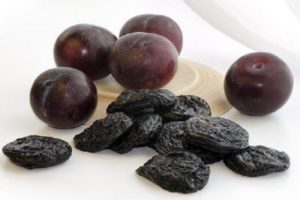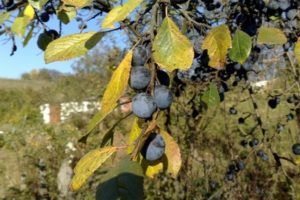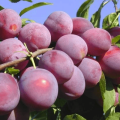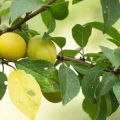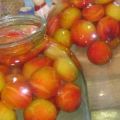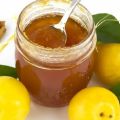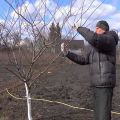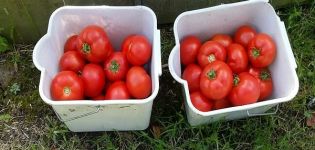Description of the best varieties of cherry plum for the Moscow region, planting, growing and care
Many gardeners, choosing cherry plum for the Moscow region, make a big mistake - they buy seedlings without first understanding the peculiarities of the variety. The planting ends quite predictably - the death of the seedling, because not all trees are able to withstand rather difficult climatic conditions. In order to avoid a fatal mistake, it is better to understand in advance the main characteristics of the culture, find out what advantages certain varieties have, and choose cherry plum for your region.
What to consider when choosing a variety
Cherry plum is a thermophilic plant, therefore, gardeners of the Moscow Region are advised to grow hybrid trees crossed with plums. Hybrids can easily withstand even severe frosts or unstable climatic conditions, are distinguished by fruiting, resistance to diseases.
When choosing the best varieties, it is recommended to give preference to large-fruited crops that will delight you with harvests. Another rule is to acquire trees of early or medium ripening periods, this ensures that the fruits have time to ripen. When buying late-ripening trees, it is recommended to study the characteristics more carefully.
Early ripe
Early varieties of cherry plum are popular with gardeners, because some trees start bearing fruit as early as early July. The description of plants will allow you to determine the choice of culture.
Found
The tree grows medium in size with a lush crown. Fruits up to 40 g. The peel is of a violet hue, the pulp is of a rich yellow hue, with a pleasant refreshing taste.
It tolerates droughts well and is immune to disease. The yield is high, an adult tree gives up to 50 kg of cherry plum.
Scythian gold
A low-growing culture, an adult plant does not grow more than 3 m. The fruits are large, bright gold. The pulp is very sweet and firm. Easily tolerates temperature changes, bears fruit abundantly. Disadvantage - requires a pollinator.
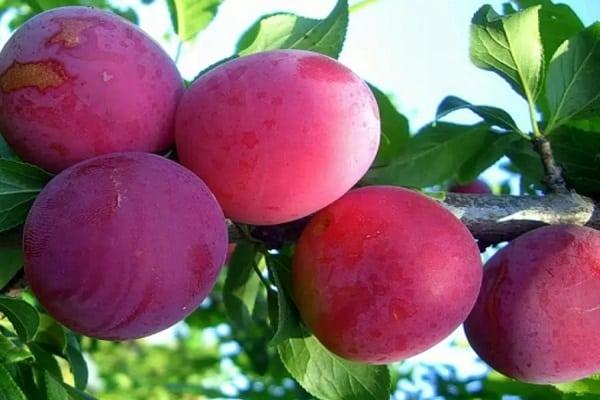
Nesmeyana
Nesmeyany trees are tall and lush. Cherry plum is considered one of the most suitable for growing in gardens near Moscow. Berries weigh up to 30 g.The color of the fruit is red, the flesh is yellow. The stalk is weak, the cherry plum falls off immediately after ripening.
Wind
Another cherry plum variety that will delight lovers of sweet and juicy fruits. The berries are large, some weigh up to 45 g. The tree firmly endures the coolness, severe frosts. To increase fruiting, you need a pollinator.
Tent
A variety with a crown shape that resembles a lush tent. Fruits are ordinary - weighing up to 35 g, with sweet pulp. Transportability is excellent, therefore it is often grown for the purpose of sale.
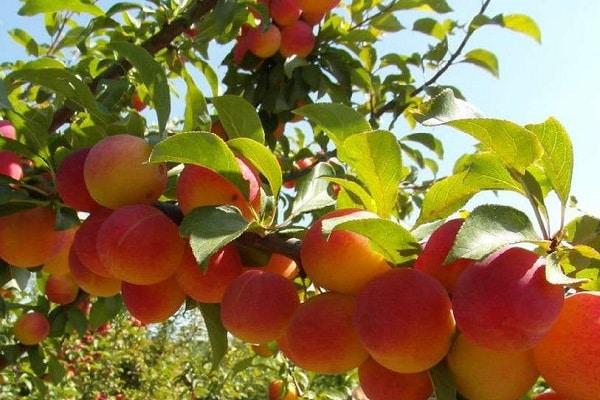
Flint
Differs in a bright red tint. The berries have a dense core with a slight sourness. The use is universal, cherry plum is used in the manufacture of preservation, in the preparation of desserts, used fresh.
Medium ripening
Cherry plum, which ripens in mid-summer, is also held in high esteem by gardeners - trees bloom quite late (in mid-spring), fruiting occurs in the second half of summer. Usually varieties are resistant to diseases, frost.
Chuk
A low tree, the crown is lush, slightly thickened, although this does not affect fruiting. The shade of berries is rich, yellow. The stone is difficult to separate, so the fruit is rarely used for jam. Pollinated by cross trees.
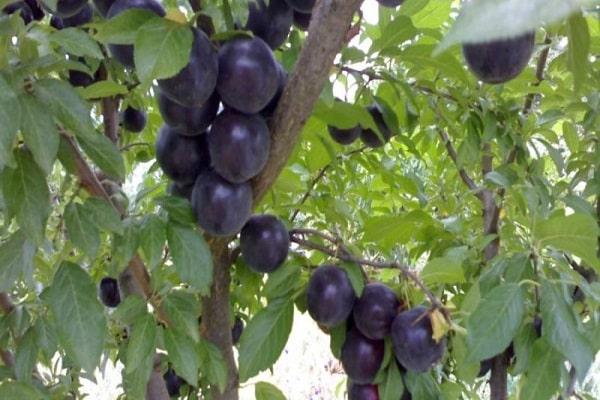
Llama
Gardeners like its versatility, it is recommended to use cherry plum fresh, for baking, preservation. The berries are sweet, with a dense skin. The tree itself is large, up to 4.5 m tall.
General
Cherry plum lives up to its name, it stands out magnificently and proudly among the trees in the garden. Fruiting is abundant, the berries have a sweet, pleasant taste. Fruit weight - up to 30 g.
Columnar
Usually planted columnar due to its unusual shape. The height of the tree is up to 3 m, the diameter does not exceed one and a half meters. The berry is large, up to 40 g. The tree easily tolerates frost, even damaged branches recover quickly.

Tsarskaya
Large berries with a rich golden hue. Differs in high productivity, up to 50 kg of cherry plum are removed from the tree.
Distinctive features of the variety are keeping quality, transportability, versatility of application.
Late ripening
Flowering occurs in early May. Fruiting - at the end of summer. Usually cherry plum of late-ripening varieties has a good keeping quality, easily tolerates long-term transportation.
Gift to Primorye
Cherry plum ripens almost in autumn, so not many gardeners run the risk of growing this variety. A distinctive feature of the Gift to Primorye is large berries, the mass of which often exceeds 45 g.
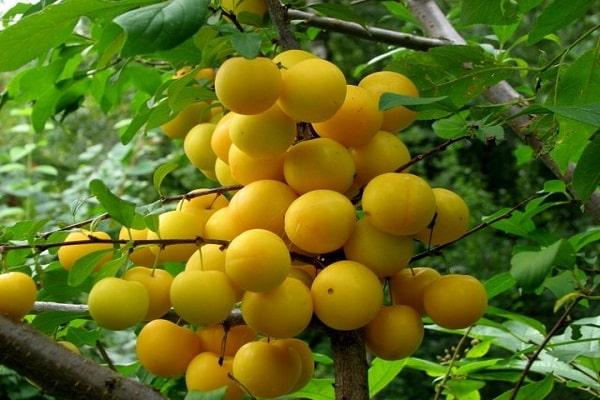
Soneyka
Lush tree with a dense crown, stable fruiting. The stalks are short, strong, so even after ripening, the fruits do not fall off. Keeping quality is good.
Large-fruited species
The berries of large-fruited crops are often compared to plums. Universal use, they look great in preservation, desserts, baking.
Monomakh
The advantages of Monomakh include:
- early ripening;
- taste (juicy, sweet);
- easy separation of bones;
- universality of application.
Fruiting is annual, abundant.
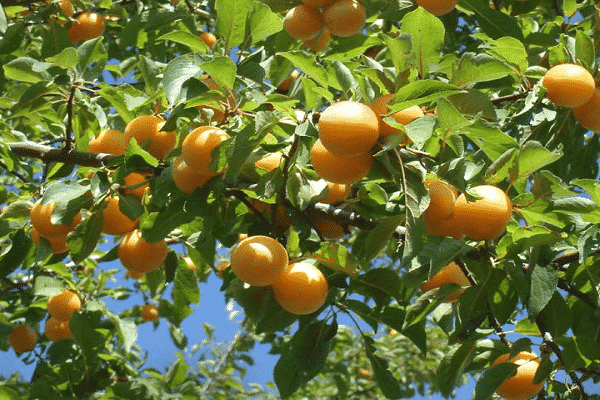
Found
The first berries will be eaten in the third year after planting. The advantages include endurance - even temperature drops will not affect the number of fruits.
Huck
Medium early fruiting, stable winter hardiness. You will need pollinating varieties. They can be used in any form.
Frost-resistant
Most varieties require winter shelter, but there are frost-resistant crops that can easily tolerate even low or unstable temperatures.
Timiryazevskaya
A hybrid of early ripening periods, distinguished by its yield. Withstands temperatures up to 35 degrees.
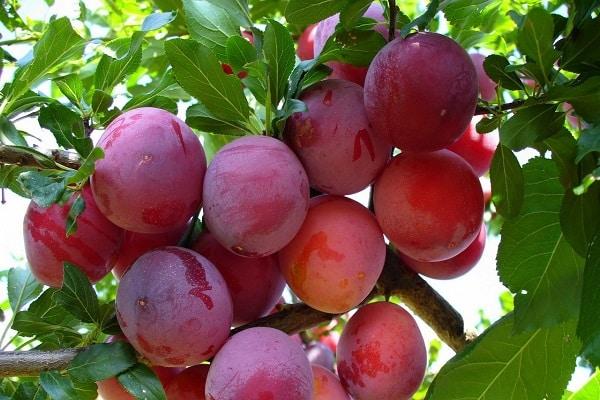
Vladimir comet
Even 35-degree frosts will not harm the tree, which, with stable heat, begins to bloom profusely. The yield is excellent - up to 50 kg per adult plant.
Rocket Seedling
Despite withstanding low temperatures, the variety is afraid of diseases. We'll have to use drugs to protect against viruses and infections.
Gift to St. Petersburg
The endurance of the Gift to St. Petersburg allows you not to worry about freezing or diseases. The variety feels great in the unstable conditions of the Moscow region, does not require shelter.
Ruby
Cherry plum with bright red berries, which look great in preservation, desserts. The fruits are sweet, without sourness.
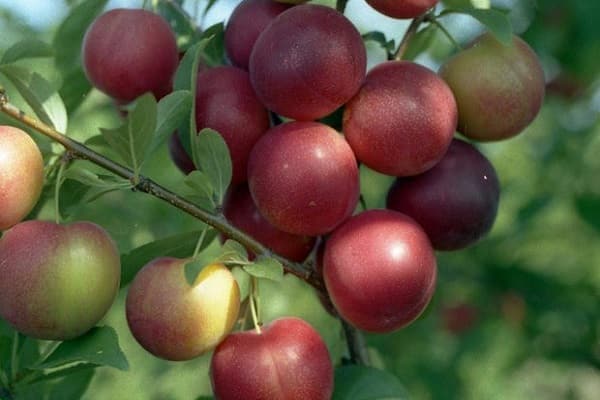
Self-fertile
Most varieties require pollinators, but there are several types of cherry plum that will delight the harvest without additional help. Self-pollinated crops are usually grown in small gardens.
Mara
A small tree (up to 3 m) has increased resistance to frost, has strong immunity. The pulp is orange, the skin is several tones lighter. The taste is pleasant, sweet.
Traveler
Usually used as a pollinator, although the tree gives good yields. A distinctive feature of the variety is its pronounced banana taste.

Kuban comet
The ruddy skin of the fruit, rich yellow flesh, pleasant taste are the distinctive features of the Kuban comet. The disadvantage is that the bones are not separated.
Hybrid varieties
The hybrid cherry plum differs little from the usual one, the only advantage is endurance. Even severe frosts are unable to harm the trees. Hybrids also have strong immunity to diseases.
Varieties of yellow cherry plum
Most varieties of cherry plum have yellow fruits. Among the most popular cultures are:
- Gold of the Scythians;
- Gift to St. Petersburg;
- Mara;
- Fast-growing;
- Huck.
There are no special advantages in yellow-fruited varieties; in taste and keeping quality, they are no different from red-fruited crops.
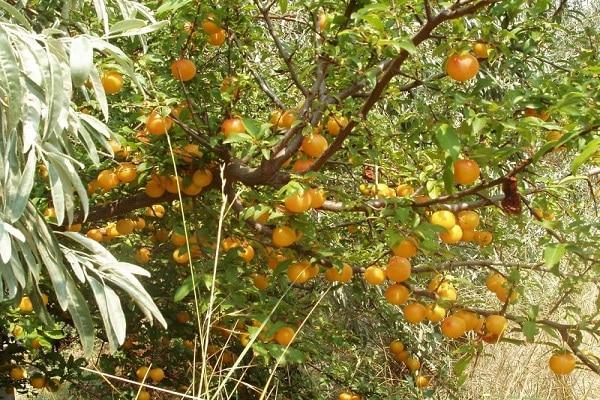
Features of growing in the suburbs
The basic rules for growing cherry plum are compliance with planting requirements, strict adherence to the recommendations of agricultural technology. Watering, fertilizing, winter shelter - that's enough to get a good harvest.
Planting a seedling
You need to plant seedlings in a special mixture, mix garden soil, a little ash, sand, a few parts of clay. If the soil in the garden is too poor, add some black soil, compost.
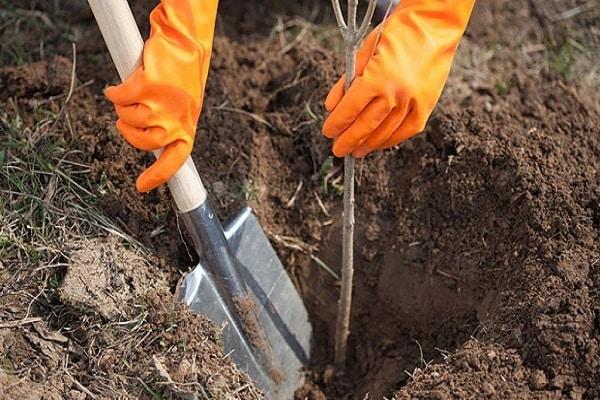
Correct care
Cherry plum is an undemanding culture. Mandatory stages of care are watering (at least once a week in the summer), loosening the trunk circle. We should not forget about top dressing, pest and disease control.
Fertilizers and feeding
Complex fertilizers are usually used. Experienced gardeners use mulching - a nutrient layer of compost or humus. With melt or rainwater, the plant receives the necessary components.
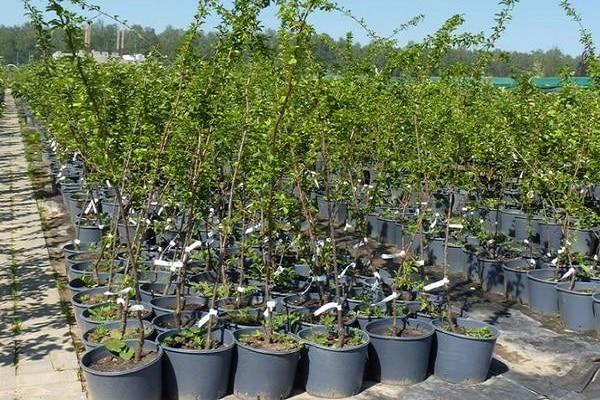
Diseases and pests
It is rarely necessary to fight diseases or insects on cherry plum, most varieties are distinguished by increased endurance. It is recommended to use fungicides against diseases, and insecticides against pests.
Pruning and shaping the crown
It is recommended to form a tree in the second year after planting. Remove part of the main trunk, shorten the side shoots. Carry out sanitary pruning annually, cut dry, damaged branches.
Shelter a tree for the winter
Geotextiles, straw, spruce branches are used to shelter plants. Be sure to cover the trunk circle (with needles, chopped straw, special purchased mats or mulch).
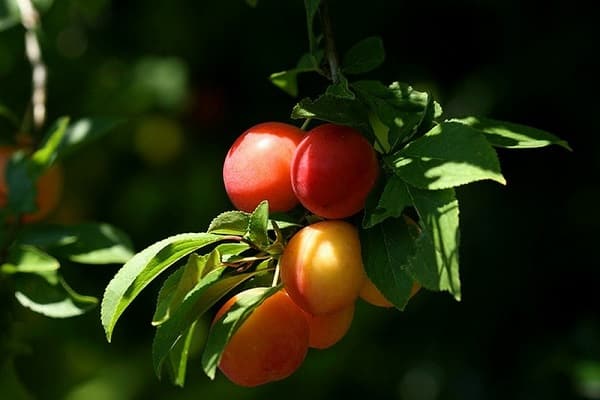
What difficulties do gardeners face?
There are no difficulties with growing cherry plum, the only thing gardeners face is that the tree refuses to bear fruit without pollinators. That is why it is better to find out in advance which variety will do without cross-pollination or to plant several plants at once.
Cherry plum is a tree that will delight gardeners of the Moscow region with fruits, even if they first started growing crops.It is not easy to make mistakes in caring for a plant, it has small requirements and even with minimal attention will delight you with juicy, sweet fruits.
